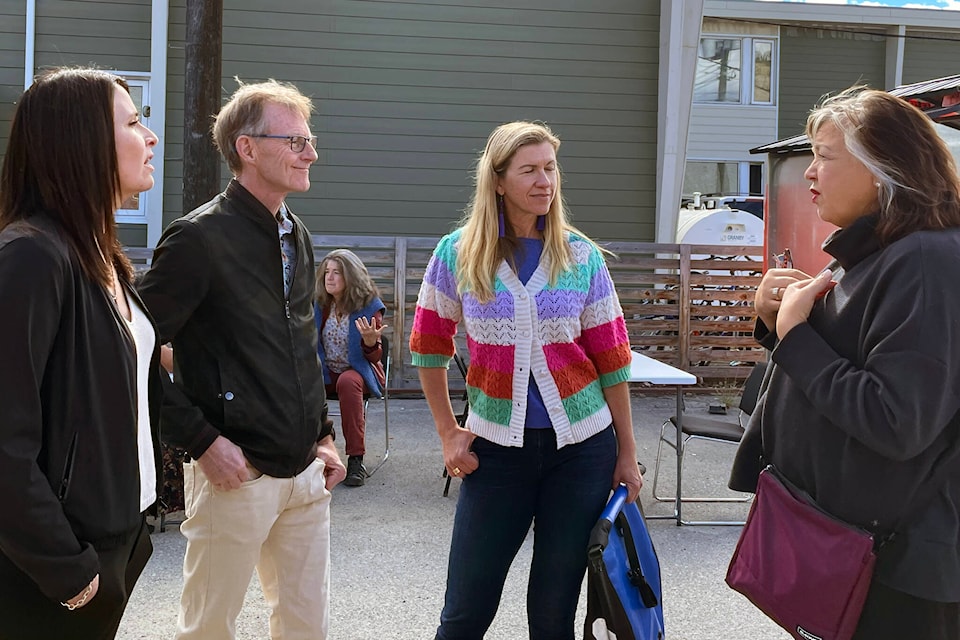The Yukon topped national charts for substance use and mental health hospitalizations in 2021, according to a recent Health Status Report.
The 2021 report, which gives a snapshot of health data, flagged several areas of concern.
It found that “attempted suicide and self-inflicted injuries” were one of four top categories of injury hospitalizations. The other three were assault, unintentional falls and transport accidents. The number of suicides reported between 2013 and 2020 were small and demonstrated a slight decline since 2016.
There were 371 emergency visits from 245 people for alcohol-related reasons in 2021.
The authors note: “Since the 2015 Health Status Report, little has changed in terms of consumption patterns and alcohol-related harms in the territory; if anything, some alcohol harm indicators have worsened.”
The report acknowledges the substance use culture, availability and pricing as factors that play into the high consumption rates.
“In comparison with implementation of best practice policies and interventions (evidence-based) for alcohol use in other Canadian jurisdictions, Yukon had the second-lowest score.”
“Yukon’s alcohol policies are not designed to reduce health and social harms.”
The News obtained the public health policy recommendations that were made in 2019 from the previous chief medical officer of health to the Yukon Liquor Corporation; none of which appear to have been implemented as part of the substance use health emergency.
The Yukon Party is condemning the government’s lack of progress, despite declaring the emergency and issuing the 2018 opioid action plan.
“It’s really tragic,” MLA Brad Cathers told the News on Nov. 28. “We continue to note that there hasn’t been, to our knowledge, even a single new addiction treatment bed opened.”
He said the government needs to do more to prevent deaths from occurring. His party wants to see an increased focus on prevention, treatment and enforcement, improving aftercare and diversion programs, and giving the RCMP more resources to target the drug dealers who are responsible for selling drugs.
Cathers and his party called on the government to create an overarching strategy, instead of just a renewal of the 2018 opioid action plan. The party is also looking for less focus on harm reduction and more on recovery.
“The number one goal of any substance abuse action plan should be to help as many people as possible, break free from their addictions and live healthy lives,” reads the Yukon Party’s news release.
Substance use health emergency update
The Yukon government is working on a new substance use action plan, according to Matthew Davidson, spokesperson for Health and Social Services.
The government also launched a $32,000 campaign to de-stigmatize addiction by encouraging person-first language, according to the contract registry. The visual campaign encourages beer-drinkers and coffee-drinkers to be called “people who drink beer” and “people who drink coffee.”
Davidson said the government is also launching a territory-wide campaign to promote awareness of the treatment, counselling and harm reduction services available from both government and non-government organizations.
Davidson lists the number of beds available at mental wellness and substance use services for withdrawal, residential treatment and out-patient treatment, all similar to pre-pandemic levels. Additive services include full-day phyician clinics, two days per week at the Whitehorse shelter. On-the-land treatment options are also on the horizon with the Teslin Tlingit Council and the Liard First Nation. The Yukon government is also woking on a trilateral funding agreement for a First Nation-led healing centre, as well as constructing a new mental health unit at the Whitehorse General Hospital.
Davidson also noted the opening of the supervised consumption site with Blood Ties Four Directions as well as alarms and improved services provided at the shelter. There were several training, education and staff development pieces completed, along with two mental health summits and a youth prevention gathering.
There is also a ministerial advisory committee which has met twice; a communications working group which meets regularly; and an executive committee described as “ongoing.”
Mental health issues prominent in rural kids
The health status report described “very concerning” findings about the mental health of Yukon youth, especially in rural areas, from the Canadian health survey on children and youth.
It found that 82 per cent of Grades 9 and 10 girls in rural Yukon felt “sad or hopeless” almost every day for two weeks or more in a row, so much so, that they stopped doing some usual activities as a result.
For the same question asked over three survey periods, the percentage of youth feeling “sad or hopeless” more than doubled from 2010 to 2018, from 26 to 58 per cent.
The same survey shows 41 per cent of girls in Grades 9 and 10 smoke in rural communities, versus 12 per cent in Whitehorse. This is in spite of a drop in smokers in the Yukon generally.
Comparing the Yukon, Northern British Columbia and Canada, the report also shows an increasing number of repeat hospital stays for mental illness in the territory between 2016 and 2021. “Repeat hospitalizations for reasons related to mental illness can indicate that there may be challenges in the community with getting appropriate care and support,” states a note attached to the table.
One of the first observations made by the report’s authors was noting substantial gaps in available data — regarding causes of death, First Nations’ health, and information regarding marginalized people.
